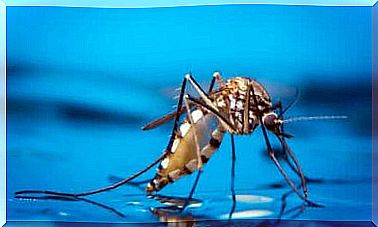Feline Leukemia: Causes, Symptoms And Treatment

Between 2% and 15% of the world’s cat population will develop feline leukemia at some point in their life. However, this often happens without their owners even noticing.
It is therefore important that you know the causes and symptoms of this infectious disease, which can also be fatal. This will allow you to take appropriate preventive measures, identify in good time when your pet has feline leukemia and make sure that the necessary treatment is given.
Feline leukemia and retrovirus
A retrovirus consists of single-stranded RNA. This virus replicates thanks to the action of an enzyme called reverse transcriptase, which enables RNA to be converted into DNA for subsequent introduction into the host cell’s DNA. Once introduced, the virus can multiply.
In the vast majority of cases, feline leukemia is infected through contact with the body fluids of another infected cat. When a cat bites another cat or comes in contact with their saliva, urine, or feces, infection occurs immediately. In addition, a mother cat can also infect her young through breast milk.
Cats with an increased risk of infection are those who are exposed to the influence of other infected people. This is very common with cats who regularly roam and meet other cats. There is also a risk of infection if several cats live in the same household, including one or more undiagnosed animals.
Main symptoms of feline leukemia
The disease often manifests itself months or even years after the actual infection. As a result, it is also very difficult to detect feline leukemia early enough to prevent other cats from becoming infected. In the early stages of feline leukemia, the following symptoms may be observed:
- Loss of appetite
- Progressive weight loss
- Enlarged lymph nodes
- Dull coat and hair loss
- Persistent fever
- Pale gums and mucous membranes
- Gingivitis, inflammation of the gums, or gastroenteritis
- Urinary tract, skin and upper respiratory tract infections
- Seizures, behavior changes, and other neurological disorders
- Visual disturbances
- Miscarriages and other reproductive system problems
diagnosis
To diagnose feline leukemia, veterinarians usually run two tests that show the presence of a protein component of the virus called FeLV P27.
A screening test called an ELISA is usually done first. Early detection is possible through regular veterinary examinations.
If this first test is positive, a second test called IFA will be done, which will help confirm the diagnosis and determine the stage of the disease. This last test detects virus particles in the lymphocytes. This condition usually occurs when the pathology is already at an advanced stage.
Feline leukemia: treatment and prevention
To date there is no definitive cure. There are certain therapies that have been shown to be effective at reducing the amount of virus particles in the bloodstream. However, serious side effects can occur, as is often the case with cancer treatments.
The only way to ensure your cat’s well-being is to seek palliative care from your veterinarian if your cat’s leukemia is very advanced. If your pet is still healthy and not showing any symptoms, the veterinarian can take steps after the diagnosis to counteract or prevent the symptoms of the disease.
If you want to protect your cat from the infection, you can do that by keeping her indoors. Because there is practically no risk of them coming into contact with infected animals.
In addition, there is a relatively effective vaccine. If you know that there may be infected cats nearby, this is a great way to protect your pet. Even so, such vaccination is not very common. It is therefore important that you avoid exposure to infected animals. If you have any questions or concerns, you should contact your veterinarian who can provide additional helpful recommendations and comprehensive advice.









